In November, on the banks of the calm, reflective waters of the Cascaloa Ciénaga, a floodplain lake extending 12,000 hectares (120 sq km) in northern Colombia, a group of traditional fishers met.
Nilton Chacon, a leader of a local association of artisanal fishers, stood to speak. “We are the natural protectors of this beautiful ciénaga but we have been abandoned and threatened, our land and access to our traditional fishing grounds stolen and the connectivity to the river broken,” he said.
Cascaloa Ciénaga is a microcosm of the socio-ecological threats facing the vast 3,400 sq km interconnected Mompos Depression Wetlands, in which Cascaloa resides.
Connectivity to the Magdalena River through five natural channels has been cut by a road, illegally constructed dikes, and large amounts of sediment from deforestation. The forests around the ciénaga have been slashed and colonised by cow pastures, which is a trick used by large landholders, or “latifundios,” to privatise public land.
The Cascaloa Ciénaga itself, traditionally a vastly productive fishery, has become nearly devoid of migratory fish species. The fishers have faced decades of violent threats from paramilitaries hired by the latifundios, forced displacement, complete neglect for their rights, and a lack of recognition and respect for their traditional practices and knowledge.
Fishers are not alone in confronting threats to their territories and livelihoods, as Colombia – during and after a decades-long civil war – has long been one of the world’s most dangerous countries to be a social and environmental defender. But their circumstances are unique, and a recent movement to unify and recognise artisanal fisheries around Colombia aims to help them move on.
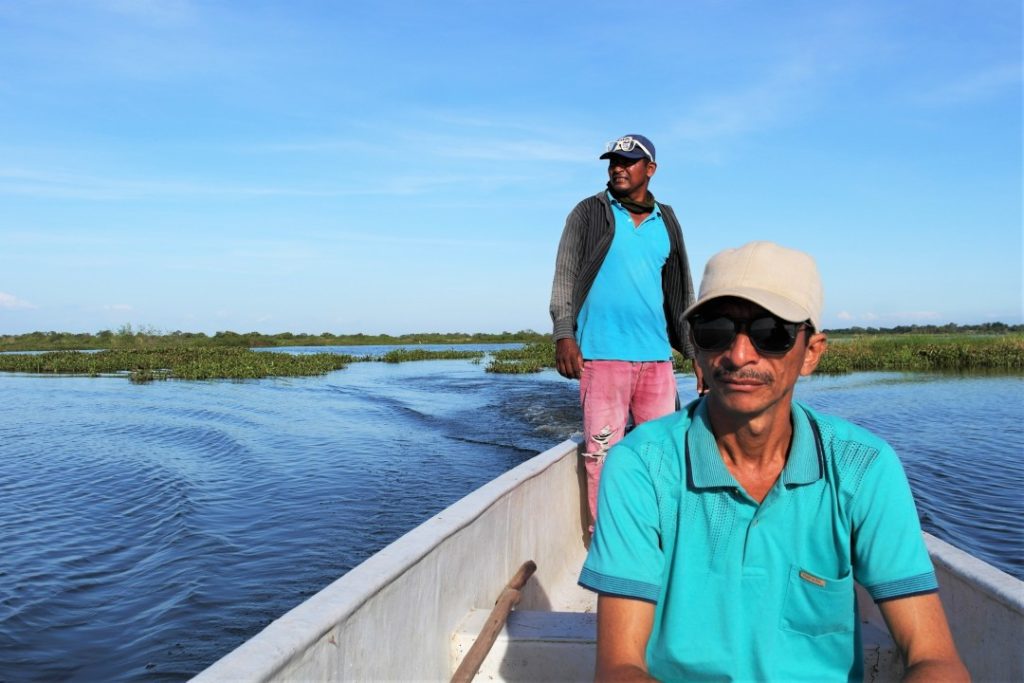
From a multigenerational family of fishers, Omar Guarín lives in the community of Santa Fe, nestled between the Magdalena River and Cascaloa Ciénaga. Guarín has worked his way from local to regional to national leadership, organising and unifying artisanal fishers along the way.
“I’ve had countless threats and attempts on my life, as have many social and environmental leaders from this region,” Guarín said.
From a multigenerational family of fishers, Omar Guarín lives in the community of Santa Fe, nestled between the Magdalena River and Cascaloa Ciénaga. Guarín has worked his way from local to regional to national leadership, organising and unifying artisanal fishers along the way.
“I’ve had countless threats and attempts on my life, as have many social and environmental leaders from this region,” Guarín said.
“It’s an unfortunate reality of life here, with pervasive corruption of local and regional authorities, and so much power held by the latifundios. For decades the Mompós Depression region has been an ultra-conservative stronghold with a heavy presence of paramilitaries, who on behalf of the latifundios threaten and intimidate the fishers for coming close to the land that they have incorrectly claimed as their own, as these were always traditional fishing areas,” he said.
Guarín’s half-brother Jairo de la Halle, a fisher who previously fought to protect farmland that was part of an agroecological system in the region, was violently threatened in the early 1980s by paramilitaries that were contracted by powerful land-grabbers, and fled to Venezuela between 1982 and 1984.
“Several companions were killed, and my wife lost her life at this time,” he recounted, while fighting back tears. “We continue to live in fear of the large landholders that stole our land and threaten us and started the downward spiral for this previously peaceful and productive region,” de la Halle said. “But life goes on, and we must continue to try to recover our land, water and harmonious way of life that revolved around and was connected by the ‘atarraya’ (traditional hand-woven fishing net). If not, what else is there?”
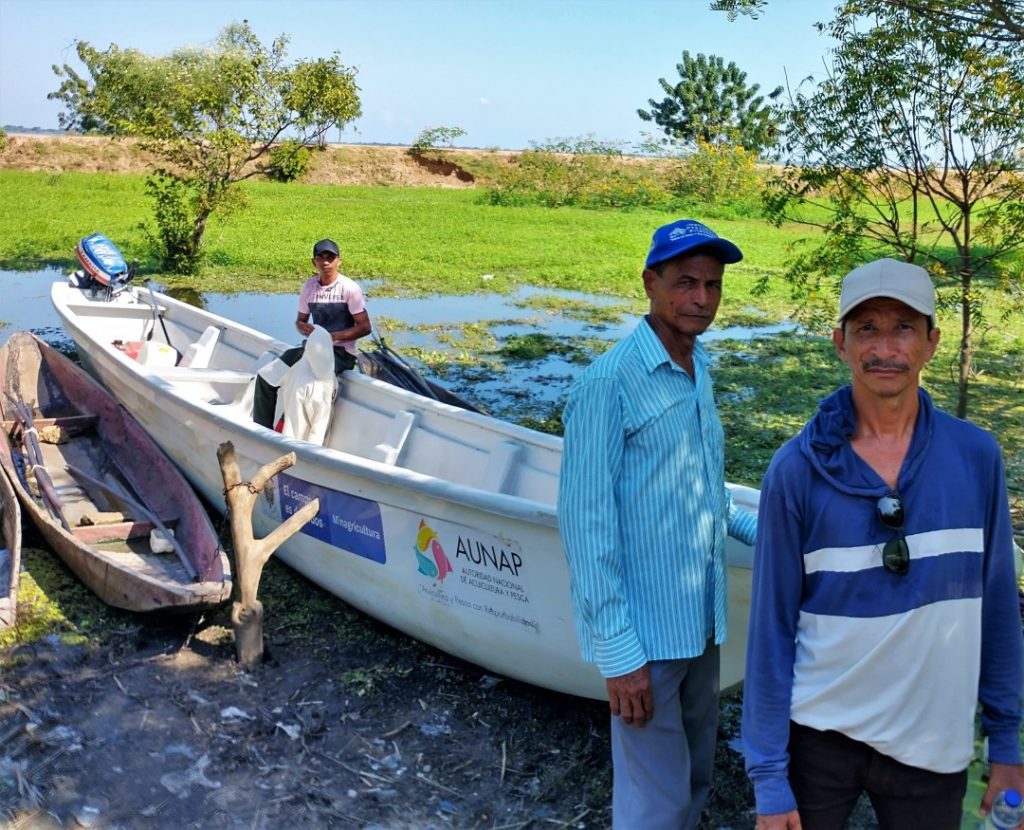
These kinds of violent threats and assassinations are far from a thing of the past. In both 2019 and 2020, Colombia earned the ignoble designation by Global Witness of the most dangerous country in the world to be a land or environmental defender. Global Witness recorded the assassination of 65 environmental defenders in 2020, but the total is likely to be much higher. According to Colombian nonprofit INDEPAZ, as of September, 124 defenders have been killed in 2021.
“A more than half-century long violent civil war, a failed peace process that has left power vacuums and numerous factions vying for control over land and illicit trafficking routes, marginalised rights of local and Indigenous communities, and blurred lines between ‘legal’ landholders, multinational corporations and mercenary paramilitary groups, has contributed to this complex stew of ongoing violence in Colombia,” Colombian geographer Juan Gonzalez said.
“The control that latifundios and paramilitaries have over the Mompós region perpetuates violent threats and expanding cow pastures, which creates disequilibrium, compactification of soils, erosion and sedimentation.”
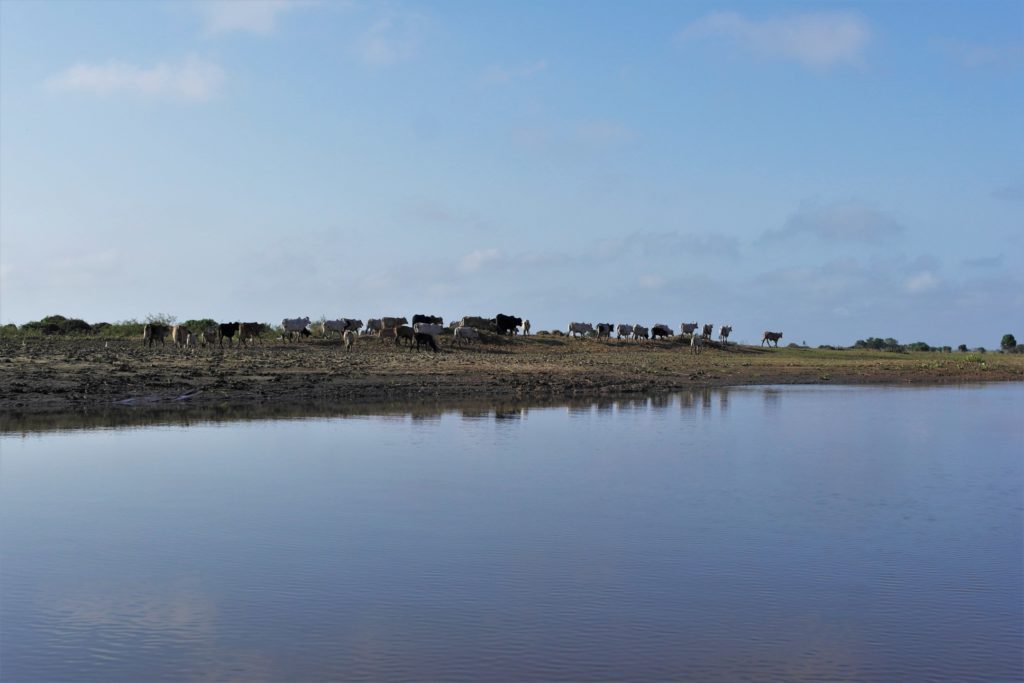
The interconnected issues of violence, ecological degradation and socio-economic hardships are not lost on pragmatic community leaders. Keila Hoyos is a charismatic 31-year-old from Panseguita, a fishing village between the Magdalena River and Panseguita Ciénaga, in the Mompós Depression Wetlands. Hoyos, who comes from a family of fishers, has seen family members threatened by surrounding landholders and left with nothing, but she keeps an eye on the future.
“We cannot just be guided by economics. We need to ask ourselves, ‘why are there no longer birds and reptiles and even manatees in our ciénaga? This is a dying ecosystem, and fishers traditionally lived in harmony with this ecosystem, fishing and small-scale farming based on the seasons, and respecting the reproductive cycles of the different fish species,” she said.
“Those only trying to find a way to make enough money to support their families through fishing, such as with aquacultures, ignore the fundamental problems that exist, and they must realise that it will not be a long term solution for their children and grandchildren.”
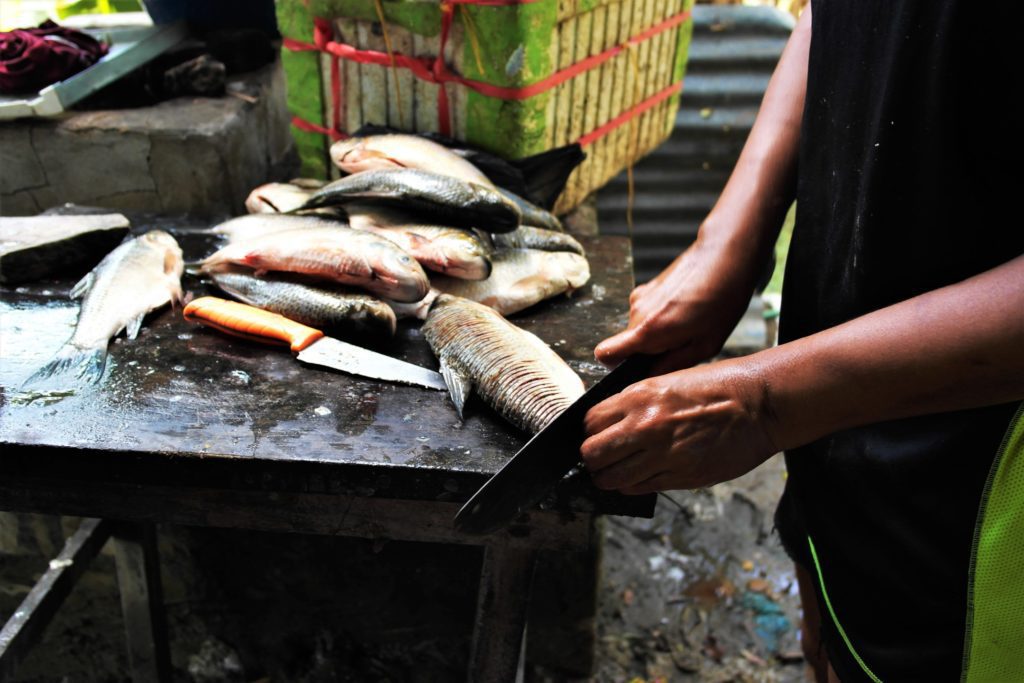
COLOMBIA’S ARTISANAL FISHERMEN FIGHT FOR RECOGNITION
Guarín is now the president of the National Confederation of Artisanal Fishers of Colombia, Comenalpac, which represents around 800 local fishermen associations, 26 regional federations and 120,000 fishers around the country. “Unified, we are a very strong socio-political voice with the power and knowledge to make change and restore these wetlands and their fisheries, and we must be listened to,” said Guarín.
Fishers were finally officially recognised as a unique demographic in 2019 by the “Defensoría del Pueblo” (Ombudsman), and have had a seat at the table during a national strike movement that’s rocked Colombia this year. “This formal recognition was thanks to the work of Omar Guarín and Comenalpac,” said a member of the Ombudsman office, who asked to remain anonymous.
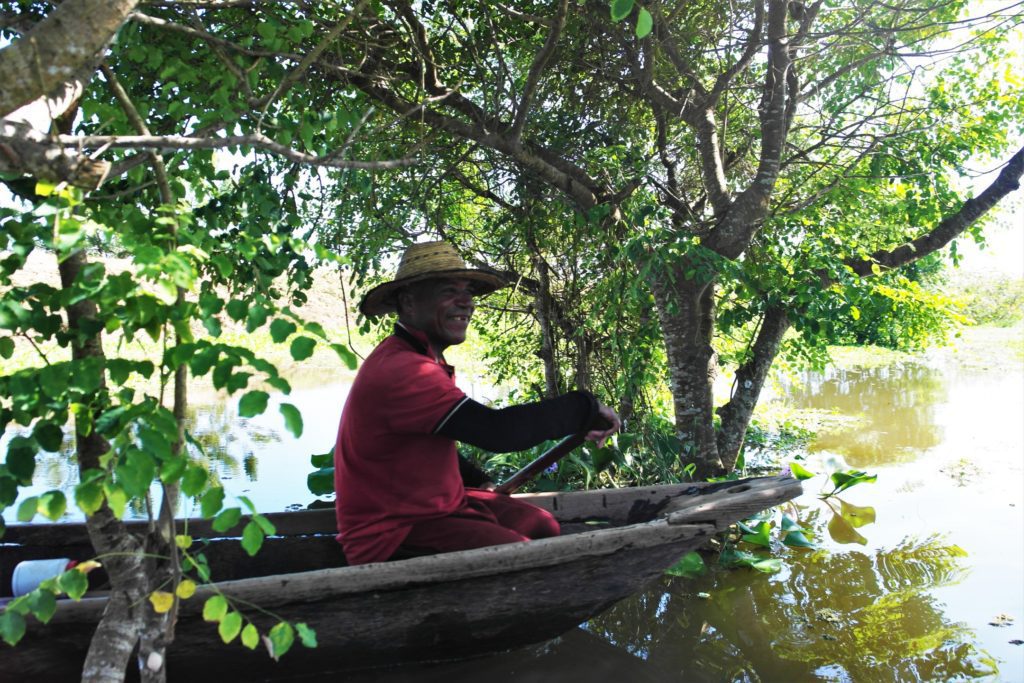
Anthropologist Juan Carlos Gutierrez, the subdirector of Colombian nonprofit ALMA Foundation, has consulted for the Ombudsman office since 2019, and has been instrumental in the fight to recognise the fundamental, communal and cultural rights of artisanal fishers in Colombia.
“The problem is that artisanal fishers in Colombia do not have full access and guarantees to essential rights, for example to the management and use of aquatic zones where they live and work, which I refer to as ‘aquatorries,’” said Gutierrez.
“These aquatorries, such as lakes and ciénagas, rivers, oceans, as well as adjacent coastlines, riverbanks and flood forests, are defined in the Colombian constitution as public use. The reality is that these traditionally peaceful fishers end up in the middle of land-use conflicts with no rights, influence or protection for themselves or their aquatorries. In many cases this leads to the loss of their livelihoods as well as threats and displacement.”
An example from the upper Magdalena illustrates the injustice. “Artisanal fishers were completely left out of the social and environmental impact assessments for impacted communities of El Quimbo hydroelectric dam, and this is because historically they had no formal recognition,” said South Colombian university professor and social-environmental rights defender Miller Dussan. “We had to form a popular action in 2019 to at least get compensation for impacted fishing communities, and we are still waiting for a ruling.”
SOCIO-ECOLOGICAL THREATS FACING THE MOMPÓS DEPRESSION WETLANDS
The pervasive interconnected issues facing Cascaloa Ciénaga, which include cumulative impacts from agroindustry, mining, urban waste, climate change and hydroelectric dams like El Quimbo, have put much of the Magdalena river basin in a state of degradation, with a particularly high level of risk to the Mompós Depression Wetlands.
Colombia’s largest wetland ecosystem, and one of the largest in South America, it lies within a 32,000 square km tectonic basin, between the confluence of four major rivers – the San Jorge, Cesar, Cauca and Magdalena – with the latter two forming a “macro-basin” and Colombia’s main bread-basket, where more than 75% of the population lives. The 1,540 km long Magdalena River is also one of the most sediment-rich rivers in South America with much of this sediment being deposited in the Mompós wetlands.
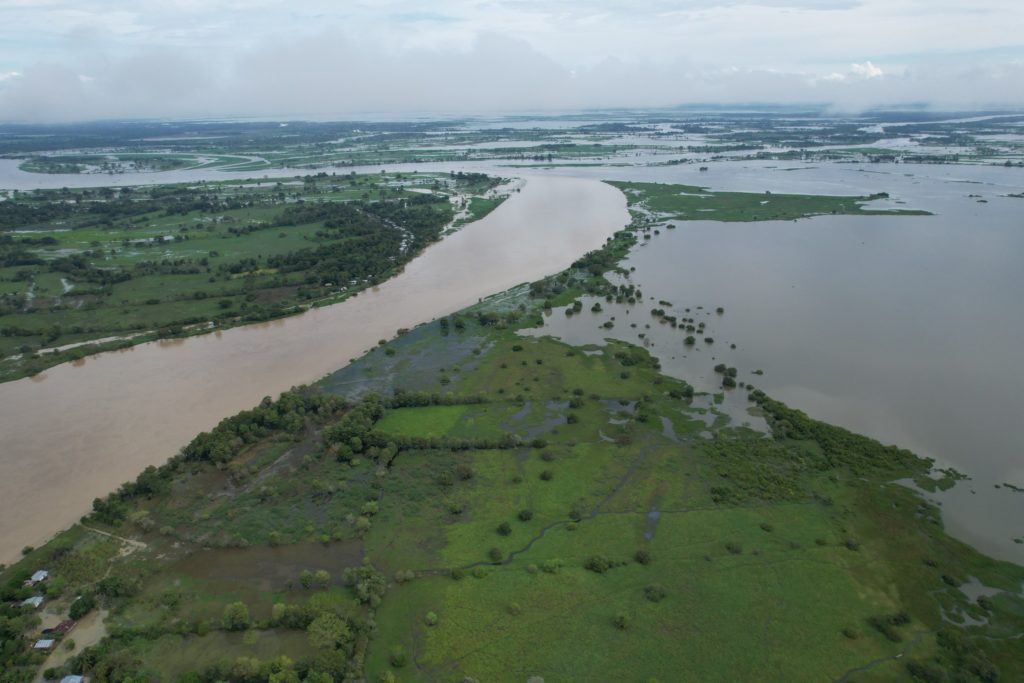
The Mompós Depression Wetlands are characterised by an expansive network of rivers, channels, floodplains, riparian and tropical dry forest, flood forests and dozens of ciénagas, which are lake-like bodies that connect to the rivers through natural channels. The ciénagas expand and contract in the wet and dry seasons, and along with the flood forests, are essential for fish reproduction.
Climate change is expected to bring more extremes of rainfall like the devastating “La Niña” flooding event in 2010-2011.
“Historically the Mompós Depression Wetlands have suffered through periods of both drought [El Niño] and extreme flooding [La Niña] events. Our modelling [based on scenarios by Colombia’s Institute of Hydrology, Meteorology and Environmental studies] showed that periods of drought will become more intense and extended, and extreme flooding events will also become worse,” said ecologist Juanita Gonzalez, who leads the climate change adaptation team at The Nature Conservancy in Colombia.
The wetlands serve as a buffer for downstream communities and the large industrial city of Barranquilla, Gonzalez said. Degraded soils and disconnected ciénagas would lead to more runoff in extreme weather events, putting millions downstream at risk of potentially disastrous flooding.
“Restoring the riparian forests around the ciénagas and channels is critical for climate change adaptation and resilience in the Mompós, as it is for reducing wetlands sedimentation and recovering fish habitats,” said Gonzalez. Protecting wetlands is also an important strategy for mitigating climate change, as bogs and forests sequester large amounts of carbon, and Colombia has pledged to restore and protect forest and certain wetland ecosystems in its 2030 climate plan.
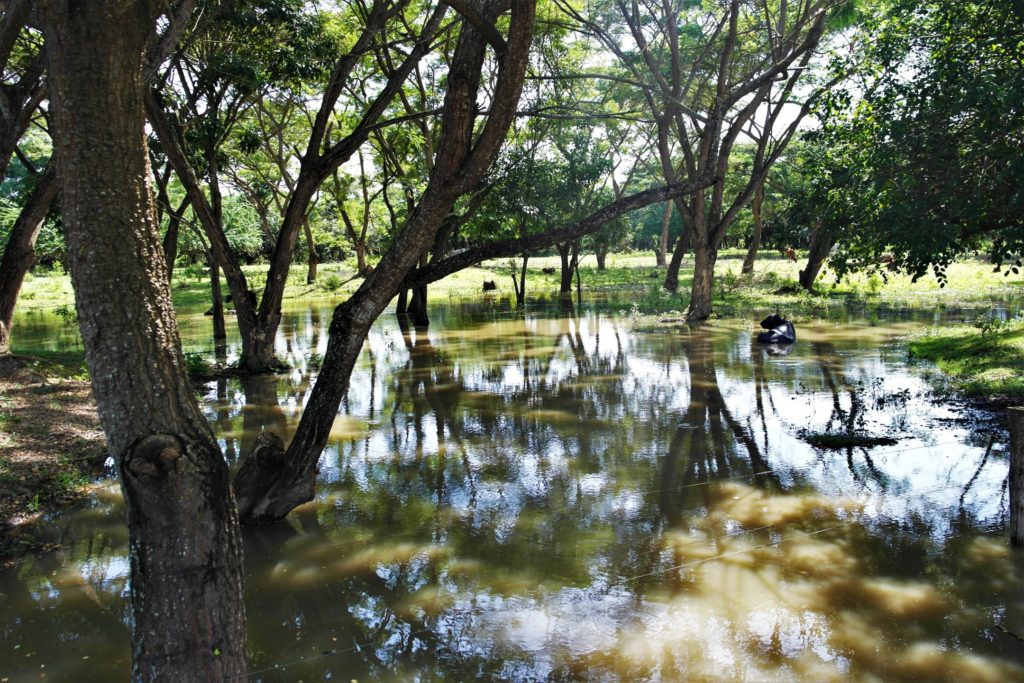
Connectivity, both vertical along the rivers – which is cut for example by dams – and lateral between the rivers and ciénagas – which is cut for example by excessive sedimentation or roads – is essential to the survival and productivity of the wetlands. “You need many things for an ecologically functional floodplain. You need connectivity to the basin, you need large-scale processes functioning at the correct scale, and you need the hydrological variability naturally expressed in these systems, otherwise they will just turn into permanent water bodies or terrestrial systems,” said Hector Angarita, a post-doctoral researcher at Stanford University, and former lead of the water group at Stockholm Environment Institute (SEI) Latin America.
Better understanding of complex basin-scale hydrodynamics, as well as seeking decentralised clean energy alternatives to hydroelectric dams, is also essential to protecting the wetlands, experts say.
See related story here:
Angarita is the lead author of an influential study from 2018 that used integrated modelling to uncover a range of present and projected non-linear cumulative impacts caused by hydropower that threaten the MDW, with a focus on connectivity, hydrology, sediment transport and migratory fish species. Building on this and other water systems research, “[SEI-Latin America] aims to incorporate further complex dynamics into our models for the Magdalena River Basin, such as climate change, land use and issues of connectivity, as well as local needs, knowledge and perspectives, including those of fishers and vulnerable fishing communities,” said Tania Santos, Angarita’s successor as lead of the water group.
In September, SEI-Latin America signed a “memorandum of understanding” with the Colombian government to collaborate on integrated plans for water management.
Conserving and restoring the ciénagas of the middle and lower Magdalena river basin are important from a biodiversity perspective. “The calm waters of the ciénagas and surrounding flood-forests, and their connection to the rivers, is essential for the reproduction and migration of many fish species,” said Silvia López-Casas, a freshwater ecologist from Antioquia University. In the river basin alone more than 220 native fish species have been identified, with more than 50% being endemic. The wetlands are also an important stopover for migratory bird species.
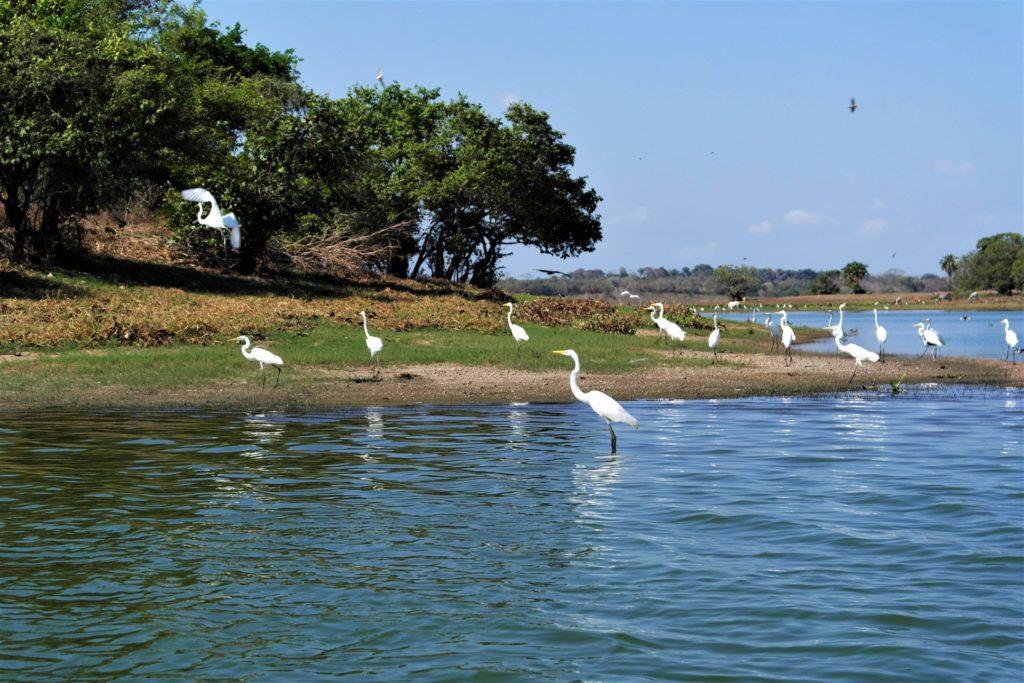
Restoration and integrated management plans formulated with local fishermen were conducted by TNC-Colombia between 2013-2019 in the now protected areas of Barbacoas, El Sapo and Zapatosa ciénagas, and this work is now being continued by Natura Foundation. TNC-Colombia and ALMA Foundation are currently formulating plans to protect and restore 15 ciénagas in the lower and middle Magdalena river basin.
BIOCULTURAL WETLANDS PROTECTION
In pre-Colombian times the Zenú kingdom learned to live in equilibrium with the flood-plains and ciénagas of the Mompós Depression Wetlands. “The Zenú used the sediments to construct agricultural terraces and houses, and dug intricate networks of channels to maintain the vital connectivity of the entire ecosystem. Much can be learned by studying their ancient practices,” said Gutierrez. “Artisanal fishers have for centuries since carried on the tradition of living in harmony with the ciénagas and floodplains.”
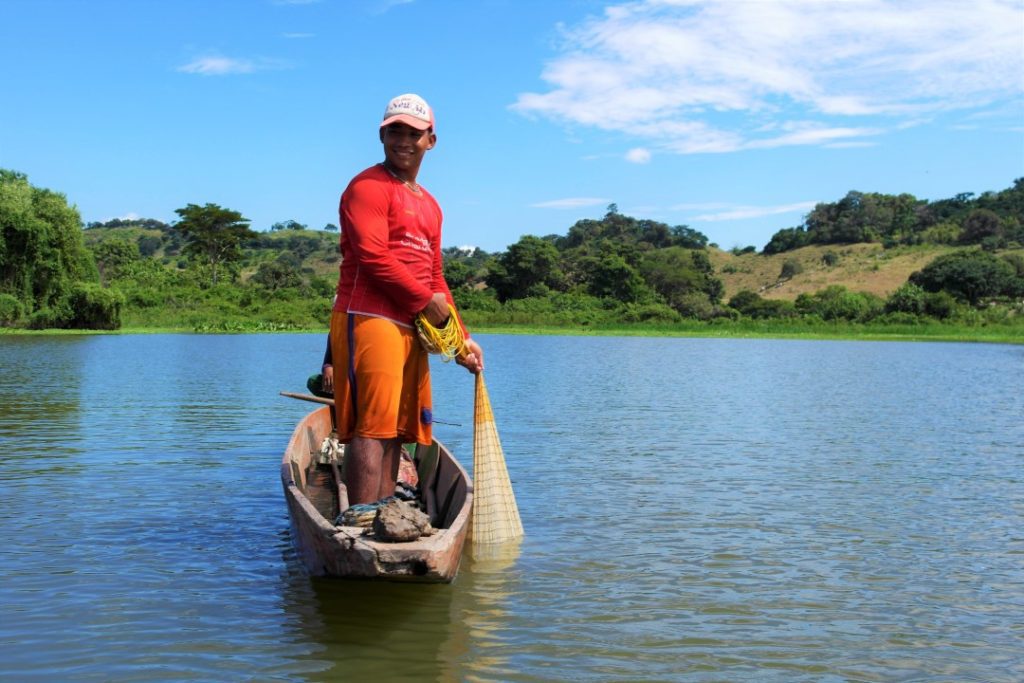
Since 2016 Gutierrez and ALMA have been working on recognising the cultural rights of artisanal fishers in Colombia. “From our analysis and through identifiable common characteristics and practices, we have shown that artisanal fishing deserves to be declared an official cultural heritage of Colombia,” he said. Plans are now being formulated to safeguard traditional fishing knowledge, practices, and aquatorries, to be presented for official approval to the Ministry of Culture in 2022.
“One central component that we are presenting in these plans is the interwoven socio-ecological aspect; that without healthy ecosystems – without connectivity between rivers and ciénegas, or without riverine and flood forests – artisanal fishing cannot exist,” Gutierrez said.
“And without artisanal fishers, there is also no way to realistically protect these vital ecosystems.”
This article was originally published as a Climate Home News special feature, with support from the Climate Justice Resilience Fund, and it’s reposted here with permission.
Read other stories by Daniel Henry Rasolt HERE.
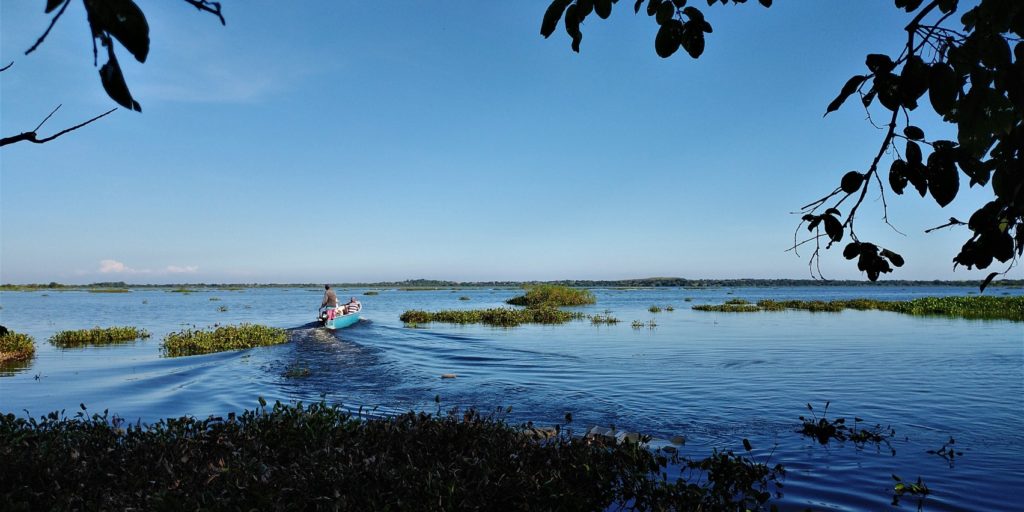
artisanal fishers latifundios Magdalena River Mompos Depression Wetlands Water Protectors